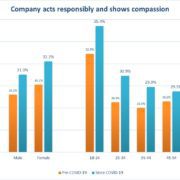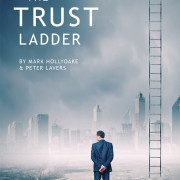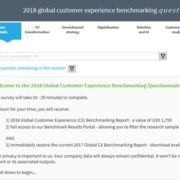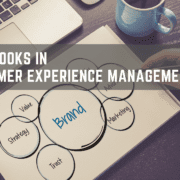The Value of Trust
The recent scandal affecting the Volkswagen Group involving a “defeat device” in engine management software has once again raised the prominence of TRUST in corporate and social consciousness.
Martin Winterkorn (Chief Executive at the time), said his company had “broken the trust of our customers and the public”, and resigned.
“We’ve totally screwed up,” said Michael Horn (President and CEO of Volkswagen Group of America, Inc).
New Group Chief Executive Matthias Mueller added “My most urgent task is to win back trust for the Volkswagen Group – by leaving no stone unturned”.
Please be assured, this isn’t another “Volkswagen bashing” blog. Every company is run and staffed by people, and human nature has a peculiar flaw in it that folk will tend to “do what they think they can get away with”, rather than what’s right for the long-term. No corporate risk/compliance regime can ever be 100% perfect and I don’t think there is yet a fully robot manned organisation?
This unhappy episode highlights three crucial issues that B2B companies should be addressing:
- How do we define “trust” at an organisational level?
- How do we evaluate trust in our business – both in financial terms and within customer relationships?
- Why do companies only prioritise trust after they’ve lost it? Can it be managed on an ongoing basis for mutual commercial benefit?
Definition of Trust in B2B
There is much more interdependence in B2B, which arguably makes trust even more important. We define Trust between B2B customers and suppliers as follows:
The willingness to be vulnerable to another party and the decision to engage in actions based upon an understanding of their ability and credibility, and with the expectations of mutual value exchange over time.
Financial Value of Trust
Volkswagen Group has set aside €6.7bn to cover the direct costs of the scandal; posted €2.5bn quarterly loss (first for 15 years); and its share price has halved.
That is just the start! The EPA in the US is likely to fine the company for breaching its standards (figures of up to $18bn are circulating), and further legal action costs have yet to be evaluated,
As of May 2015 Volkswagen Group’s market capitalisation was $126bn. As we write the current capitalisation is c. $70bn. We could conclude that trust accounts for about 45% of your company’s value. It can be argued whether this should be higher or lower, but the key point is that it’s too valuable to overlook! Perhaps the best approach to take in financially evaluating trust is an incremental view – how much is gained or lost when trust is built or destroyed?
To do this, however, we need a way to comprehensively and impartially assess levels of customer trust (and how it changes) . . .
Measuring Customer Trust
Most B2B companies measure Customer Satisfaction (CSat), Net Promoter Score (NPS) and/or Customer Effort Score (CES). For long term B2B customer relationships to flourish, companies need to explicitly measure levels of Trust and Commitment.
We utilise a world-leading B2B-specific methodology that covers all these bases and measures Customer Relationship Quality (CRQ™), with trust at its heart.
CRQ™ is an annual census of all customer contacts that quickly uncovers what is and isn’t working in the relationship. It tracks the level of trust and acts as an early-warning system to identify accounts at risk of defection or value reduction.
It enables MDs and Sales Directors to answer the following key questions:
- What is the quality of our relationships with major customers and key individuals therein – which accounts are in good shape and which are at risk?
- Which account managers are doing a good job at building and maintaining long-term customer relationships?
- Which Operational issues are damaging the relationship with major customers?
Trust Strategy
The essence of our definition is that you are trusted through your behaviours, intentions and past actions. So, your board should have a strategic conversation about:
- Behaviours: Can you demonstrate that the customer is truly at the centre of everything you do? This isn’t something that happens overnight and the board needs to show that you are in for the long haul. It’s not bad to say sorry and admit it when you get things wrong as long as people see an active demonstration that you have learnt from it and will improve going forward
- Intentions: Your vision, culture, CSR, company reports, policies, processes and people will need to clearly reflect all the elements contained within your definition of trust. These need to be constantly communicated and reinforced (starting at the top)
- Past Actions: Reputation isn’t built on never getting anything wrong – it’s forged in how you’ve handled it. Commission a review to uncover any recent incidents where trust has been jeopardised (maybe the tightening of a credit policy?) and be pro-active in remedying the situation. You are a reputable company that makes fantastic products, pays its taxes and provides employment, so also remind people of the good stuff!
We have only set this out at organisational level. It is different at inter-group and inter-personal levels, but that’s for another blog!
Our booklet “The Trust Ladder” explores the different levels of trust in B2B customer/supplier relationships and contains lots more advice on how to build it or recover it. Download it for free.
Please contact us if you would like to discuss further how we can help you build and assess customer trust in your organisation.
By Peter Lavers and Mark Hollyoake
Tweet to @customerattune Tweet to @MarkHollyoake Tweet to @PeterLavers//
- Entrepreneurialism in B2B sales - May 7, 2025
- When is a B2B Customer/Supplier Relationship a “Partnership”? - May 1, 2024
- The Customer Attuned “Infinity Loop” of Customer Centricity Explained - December 8, 2023



